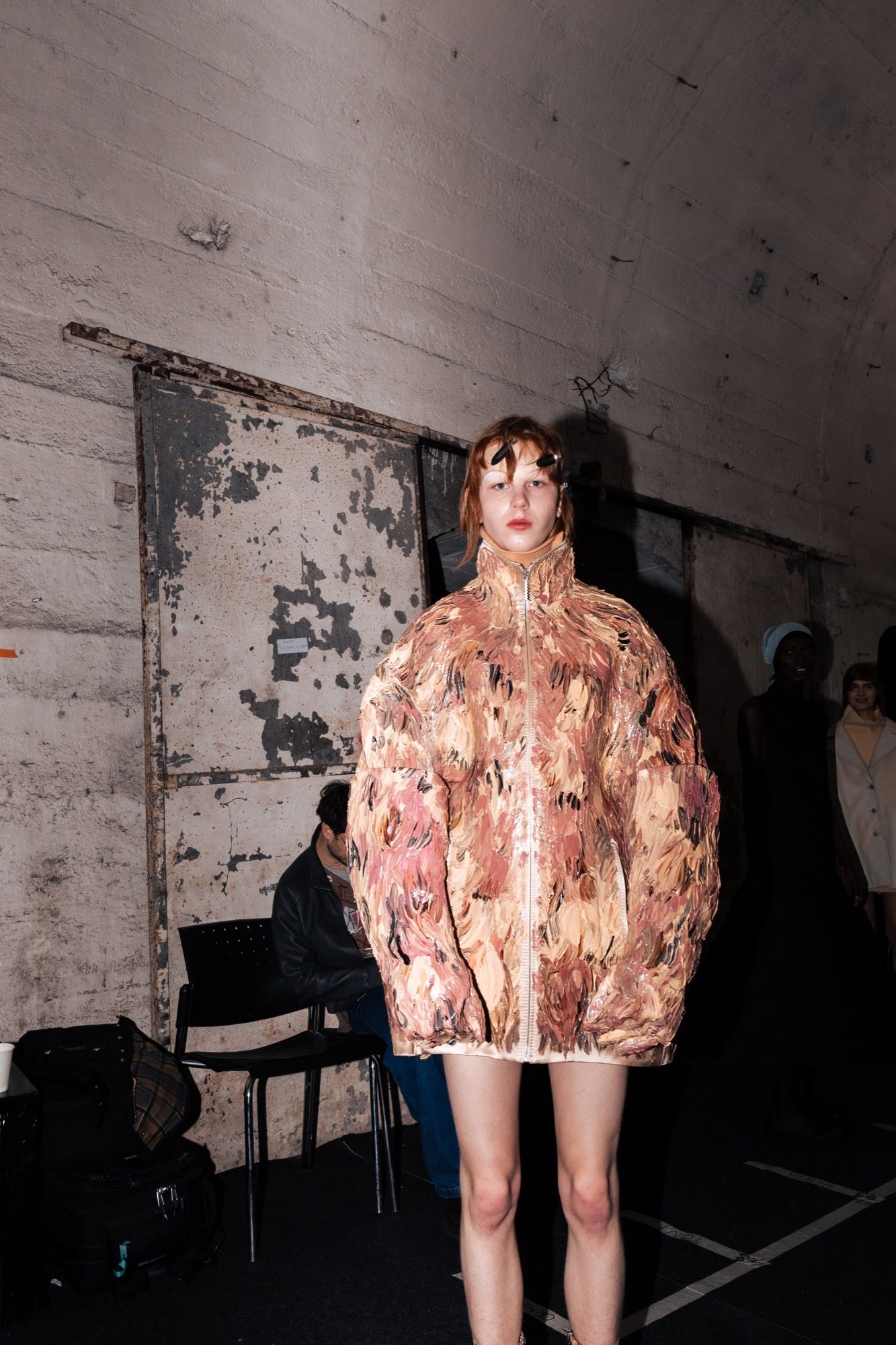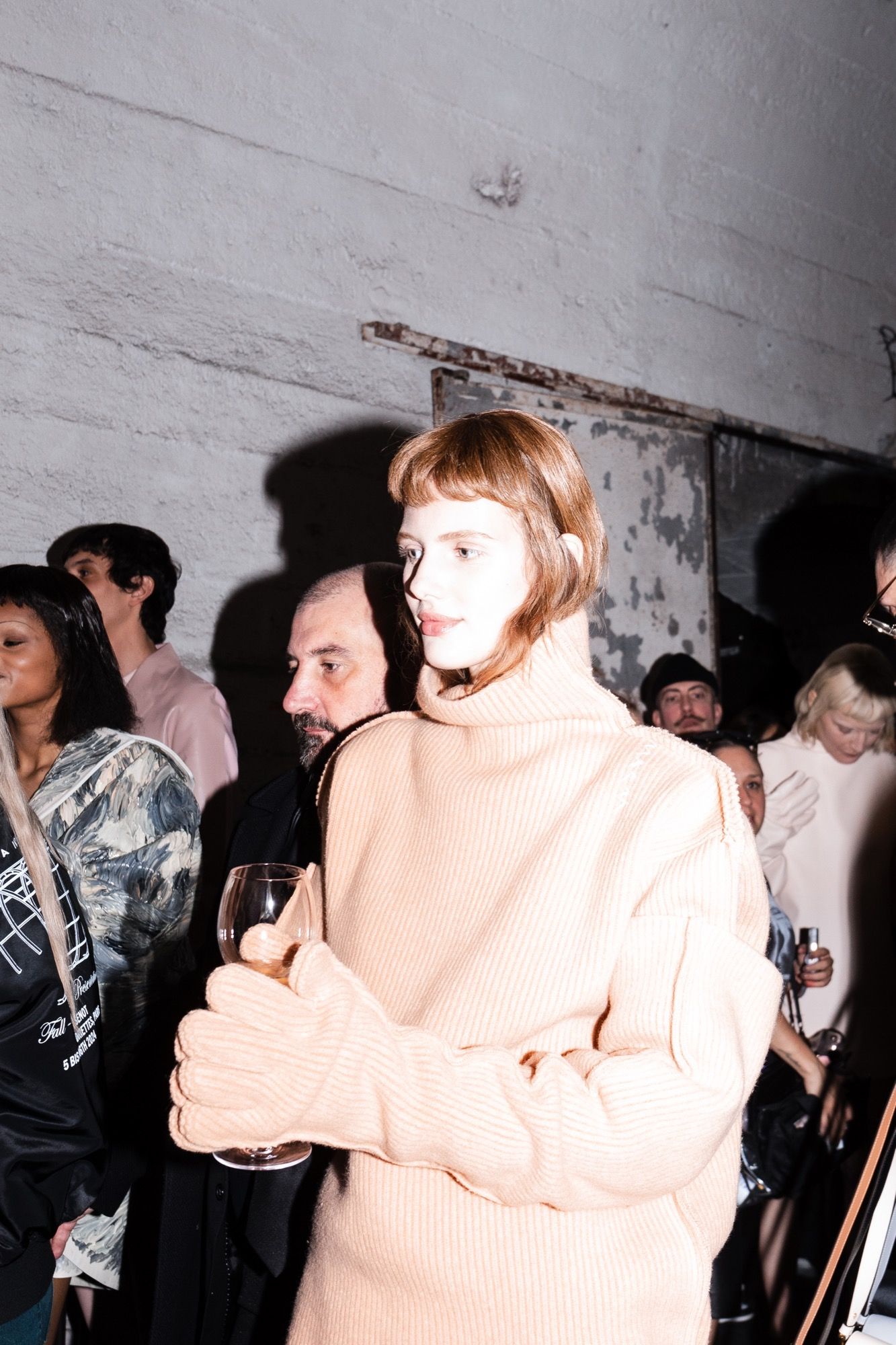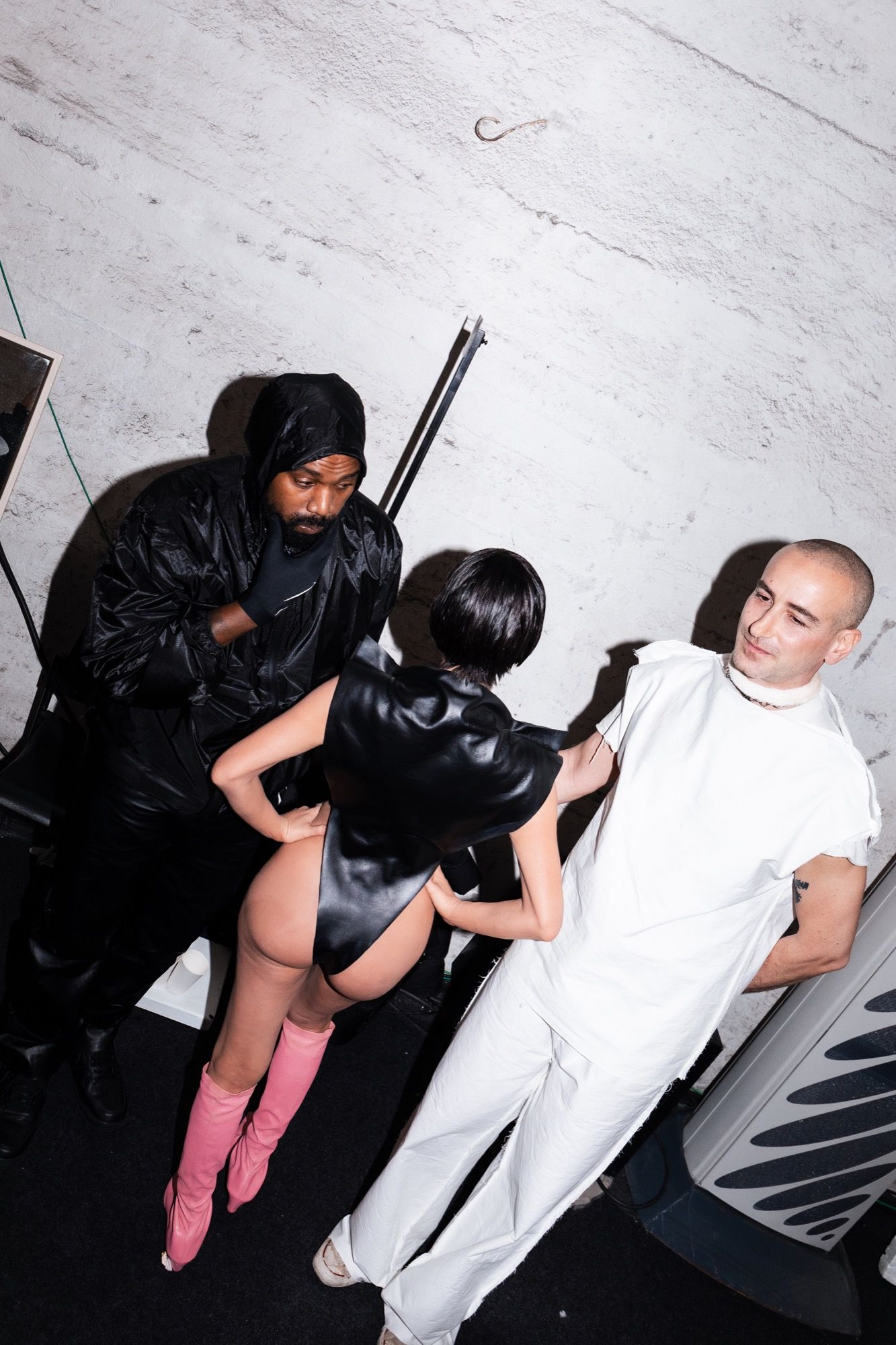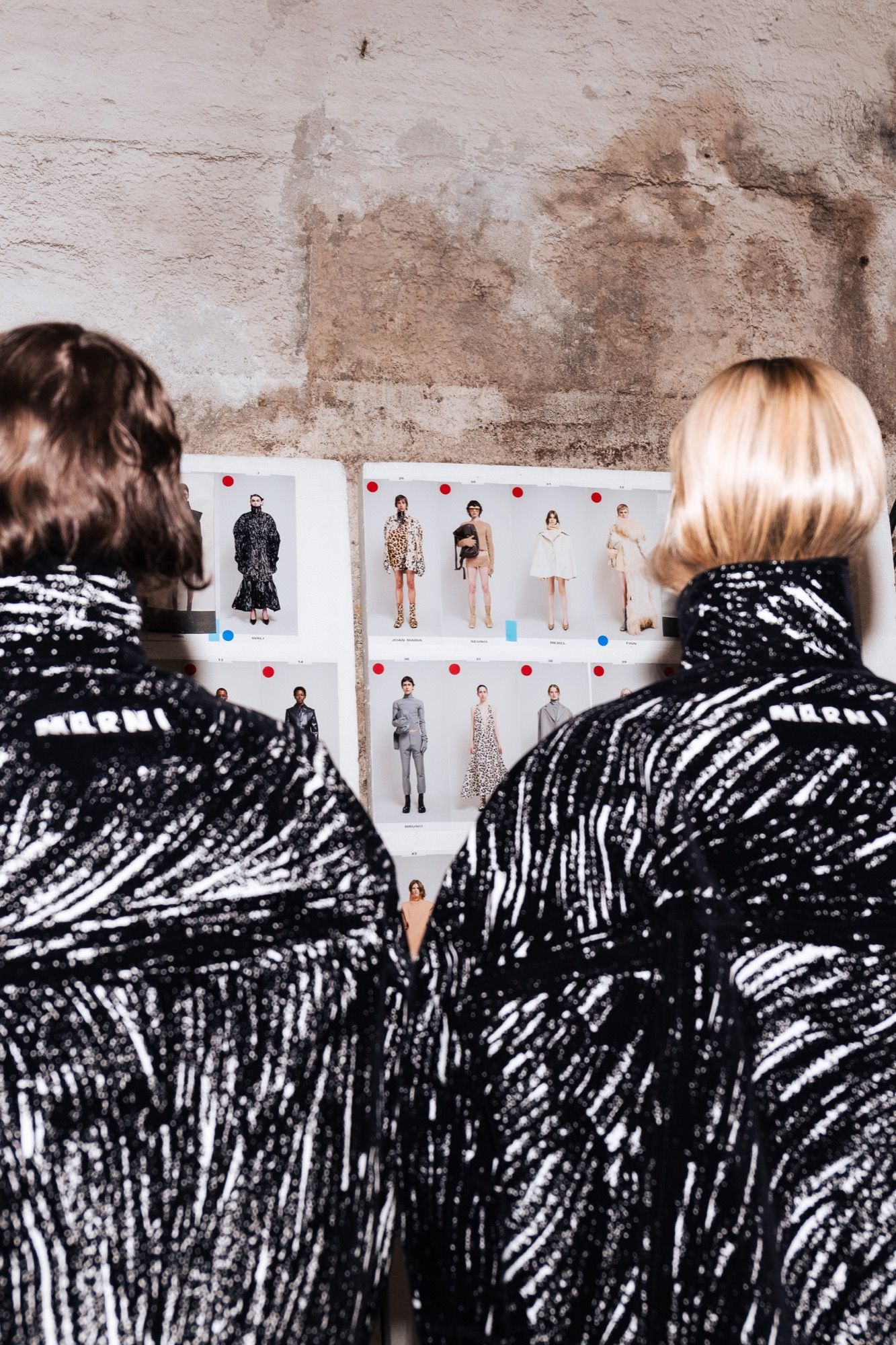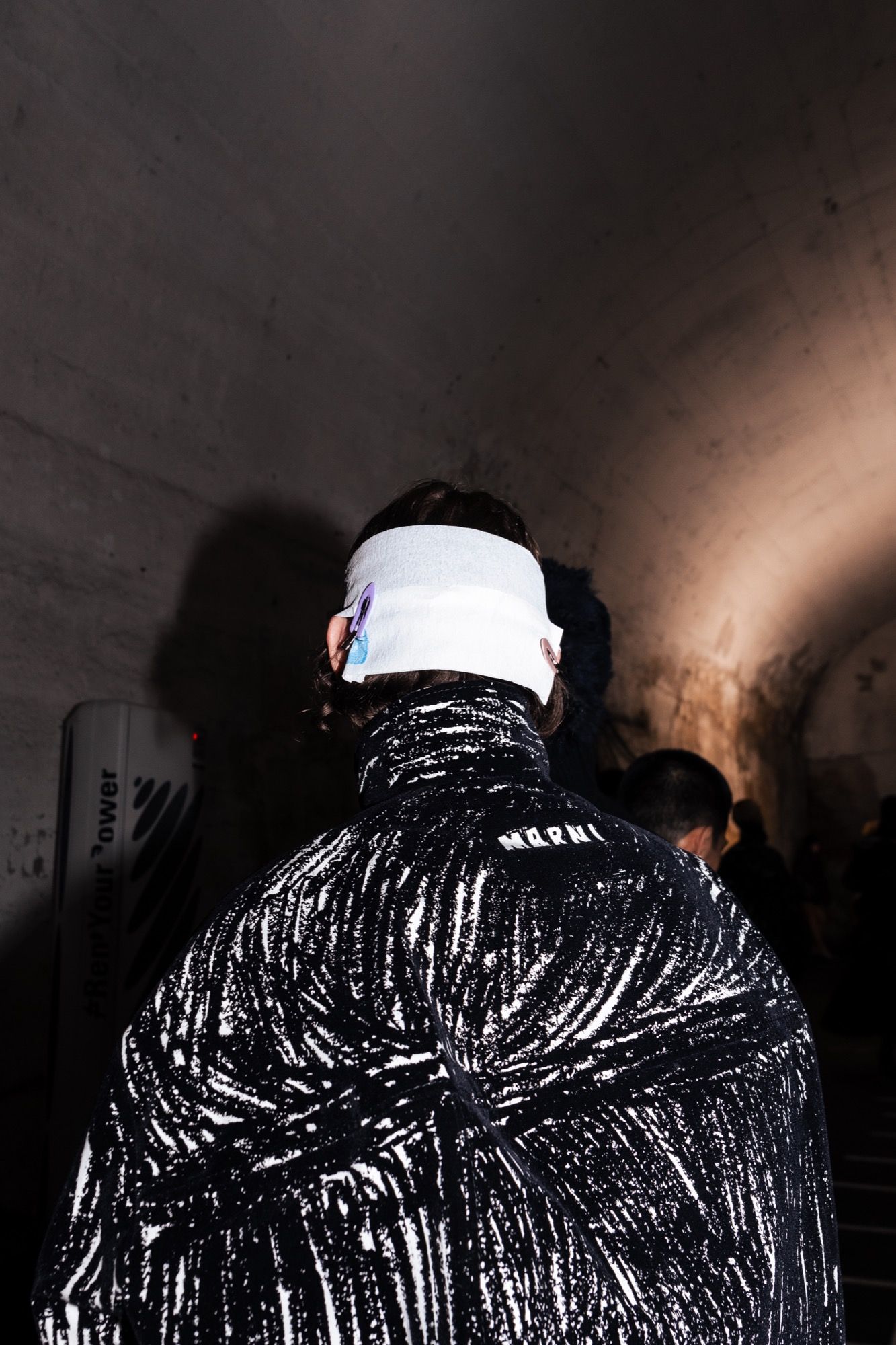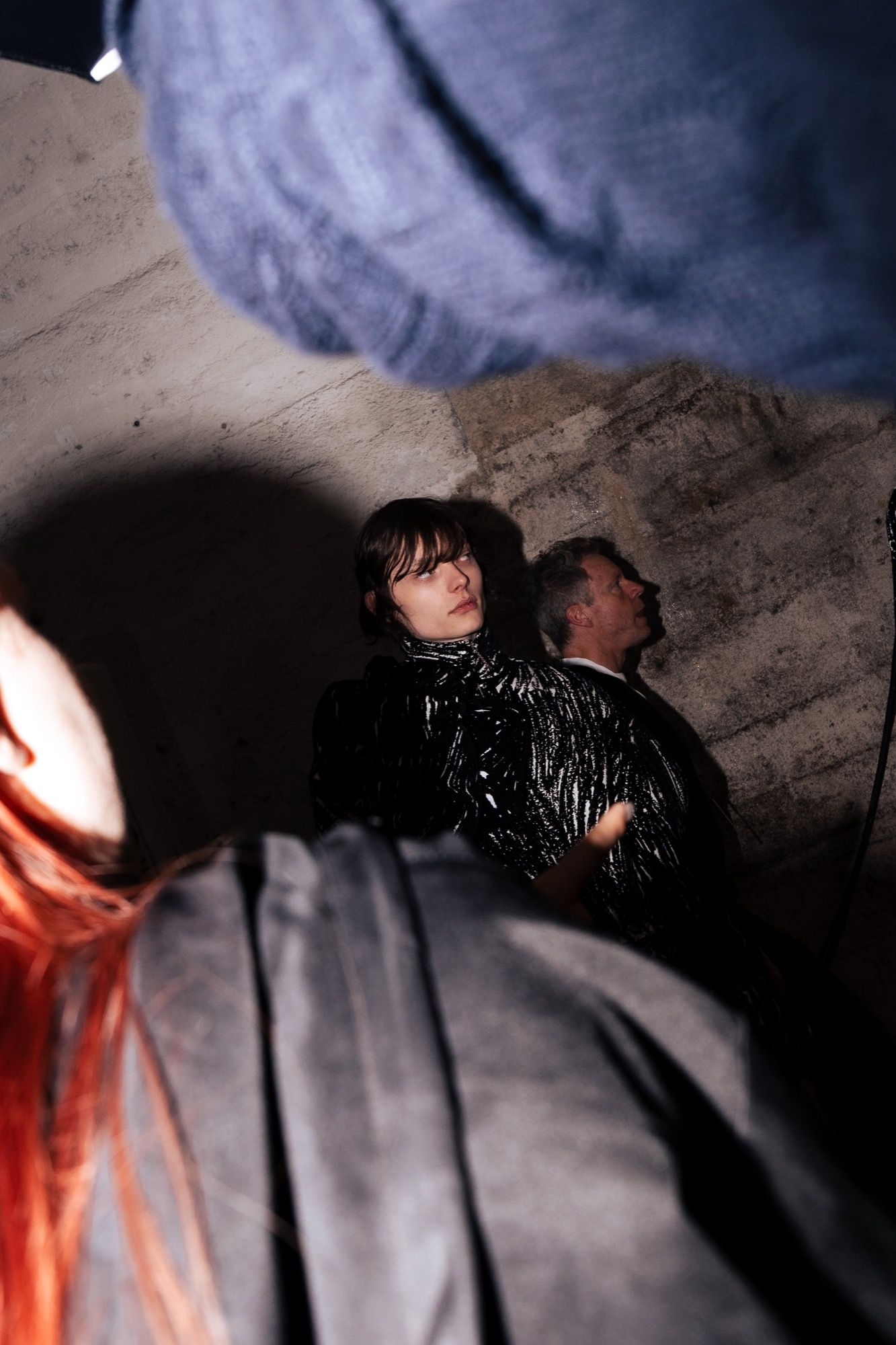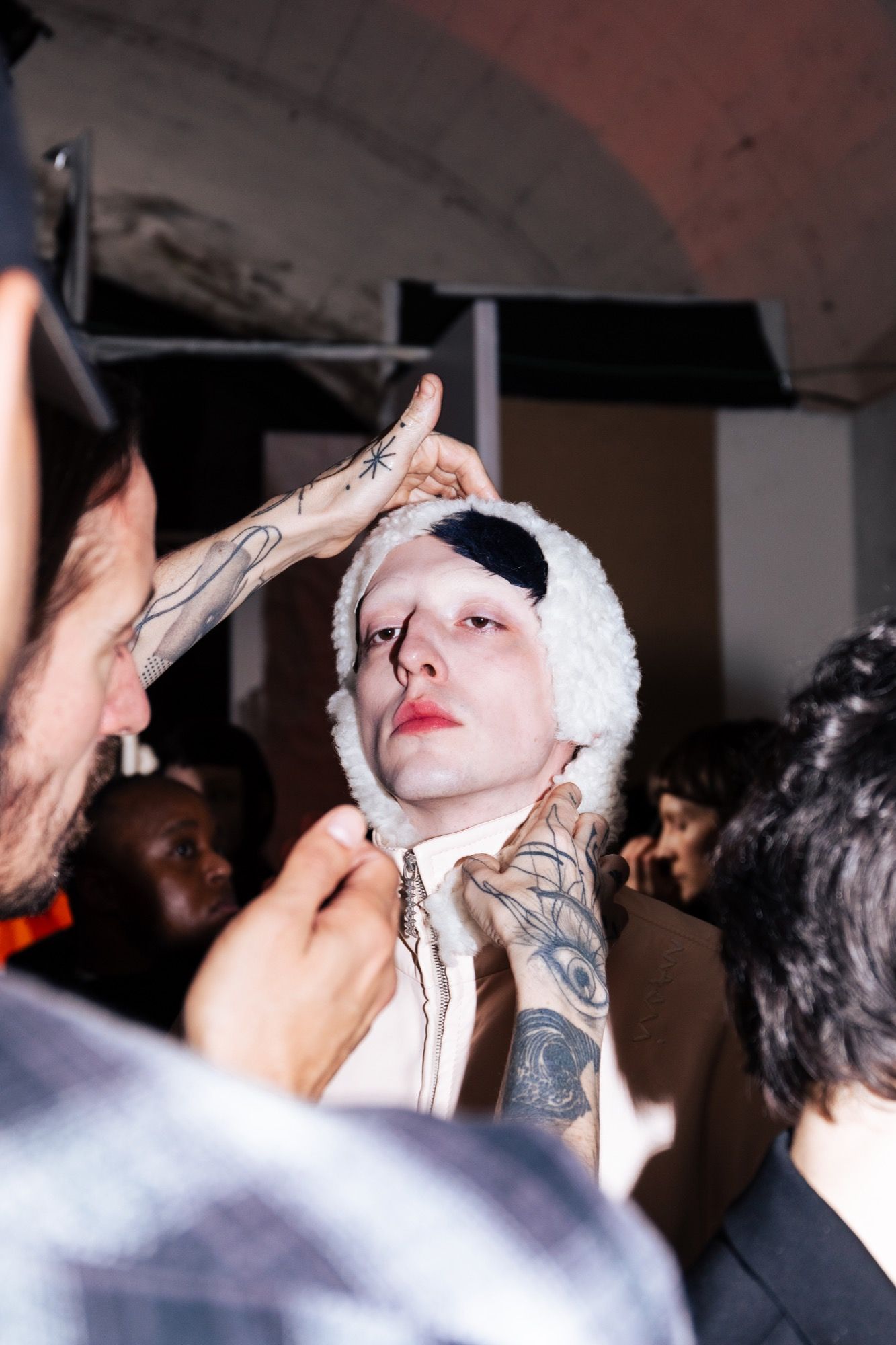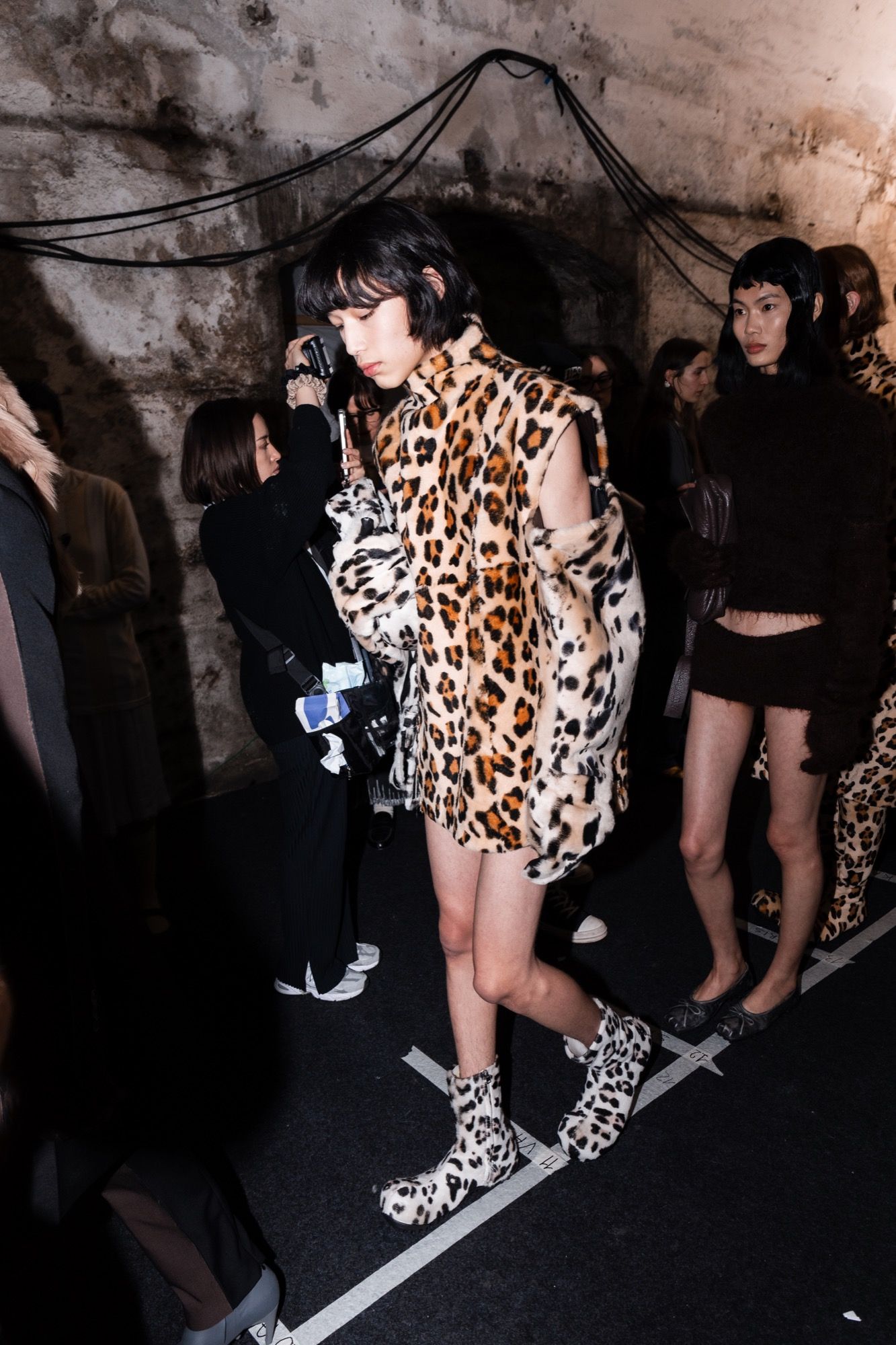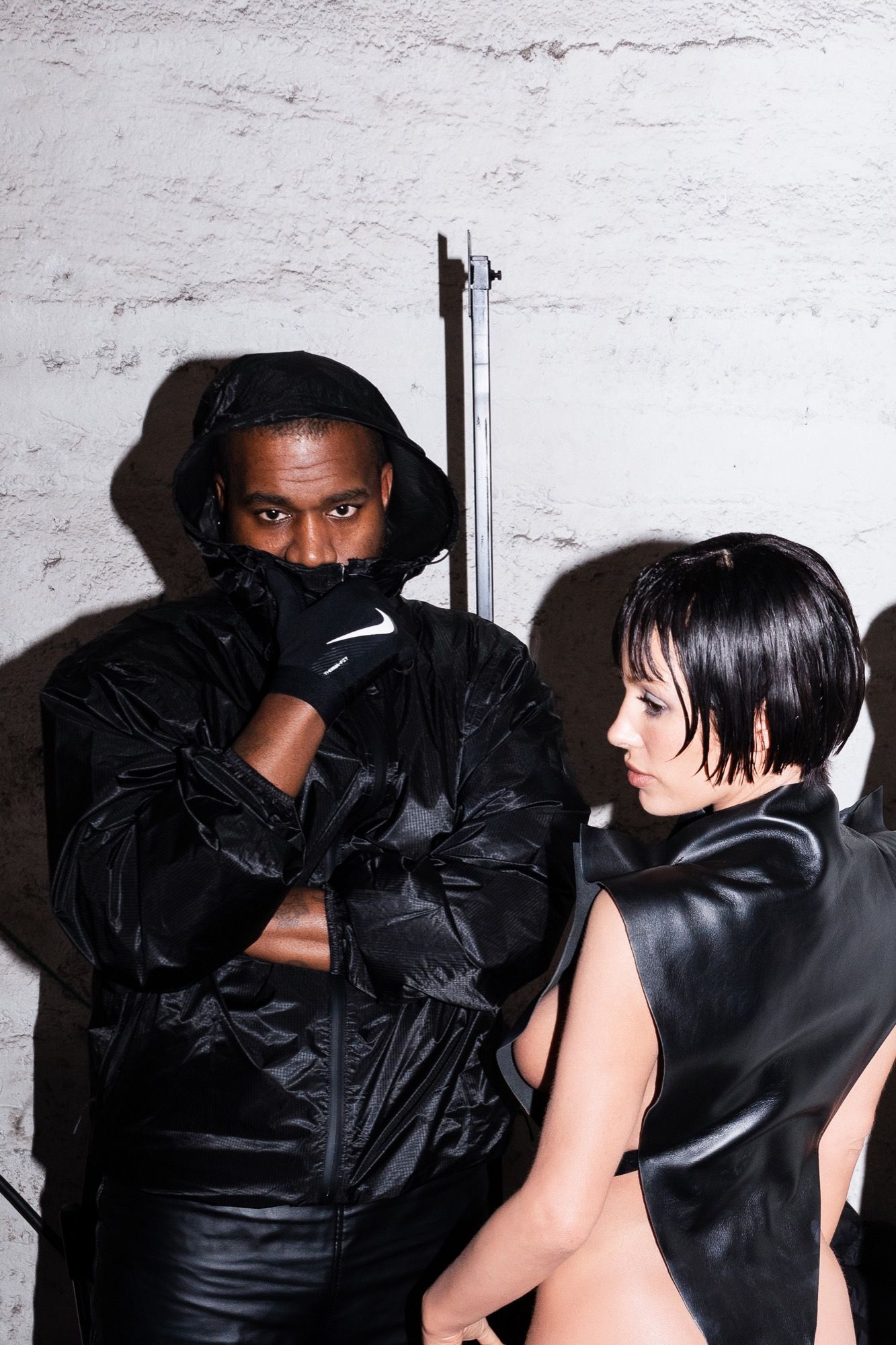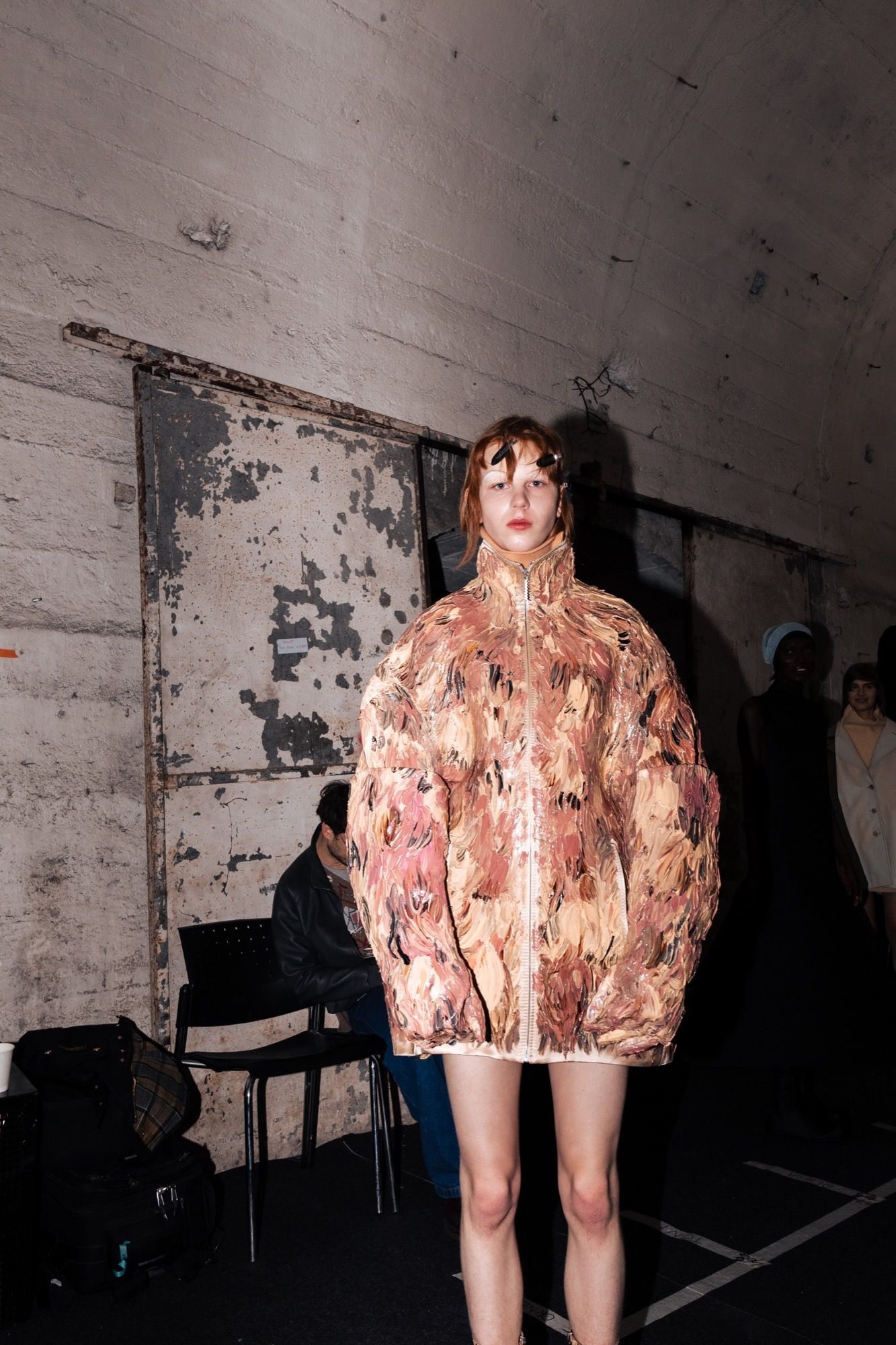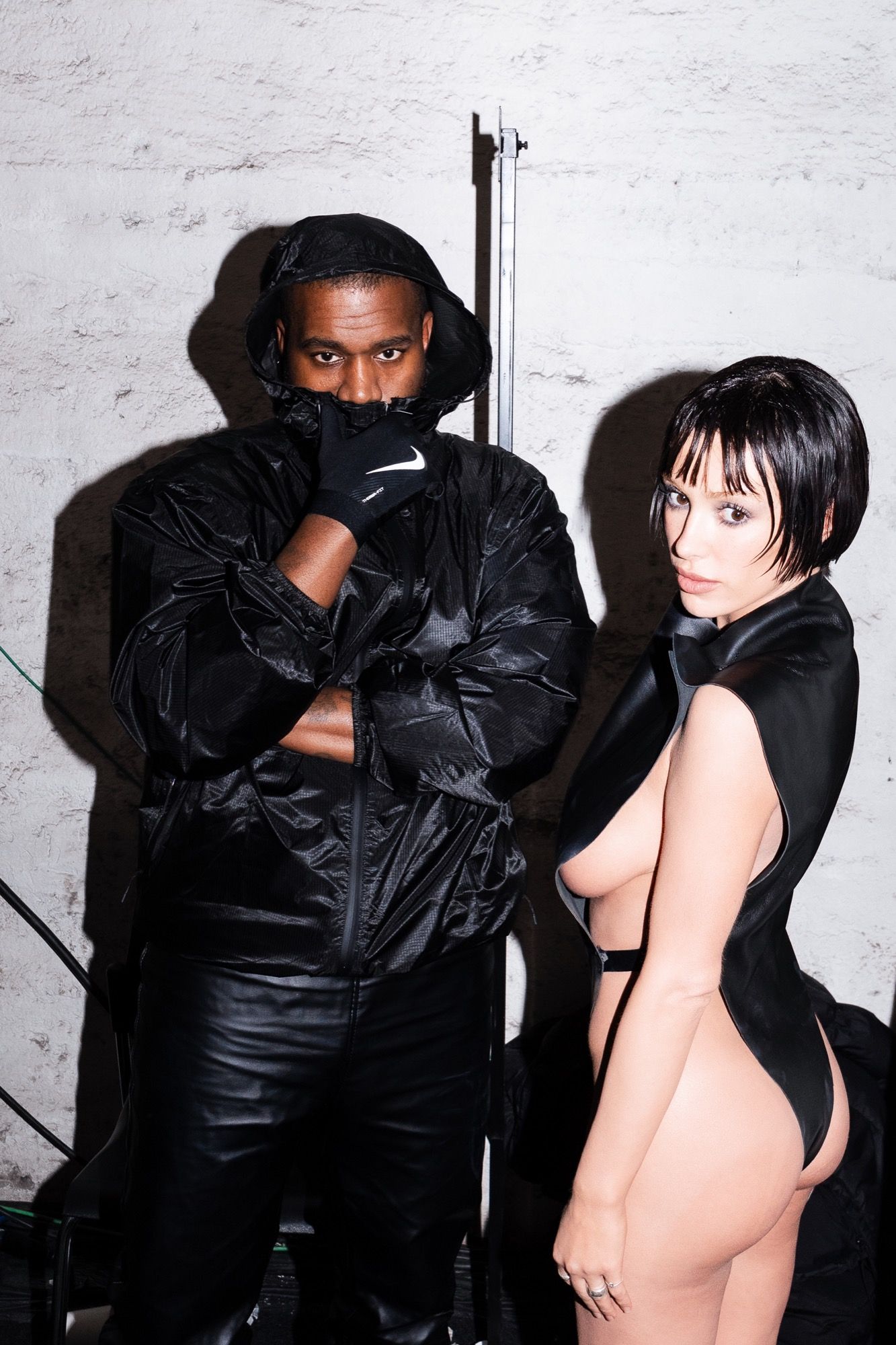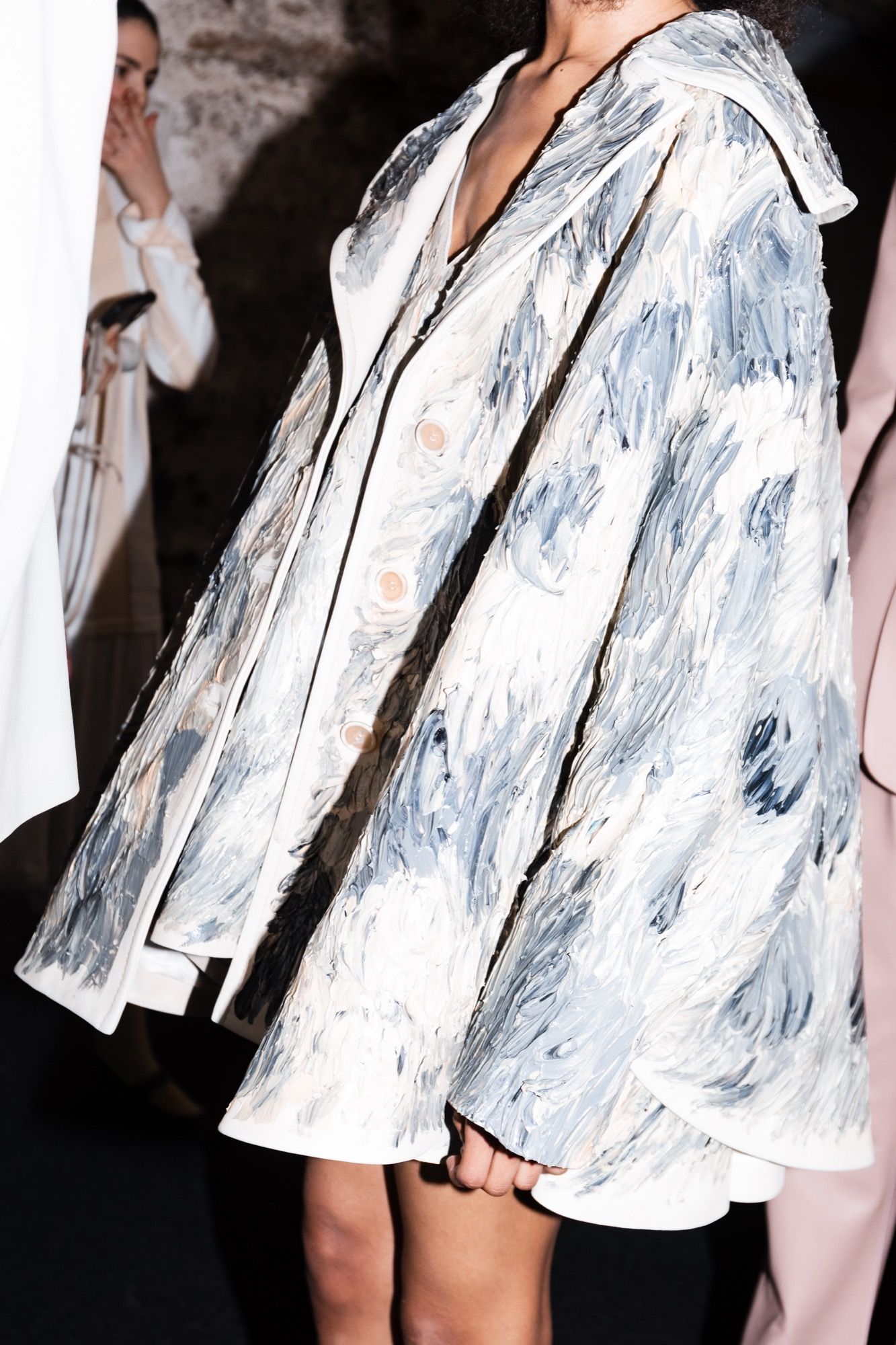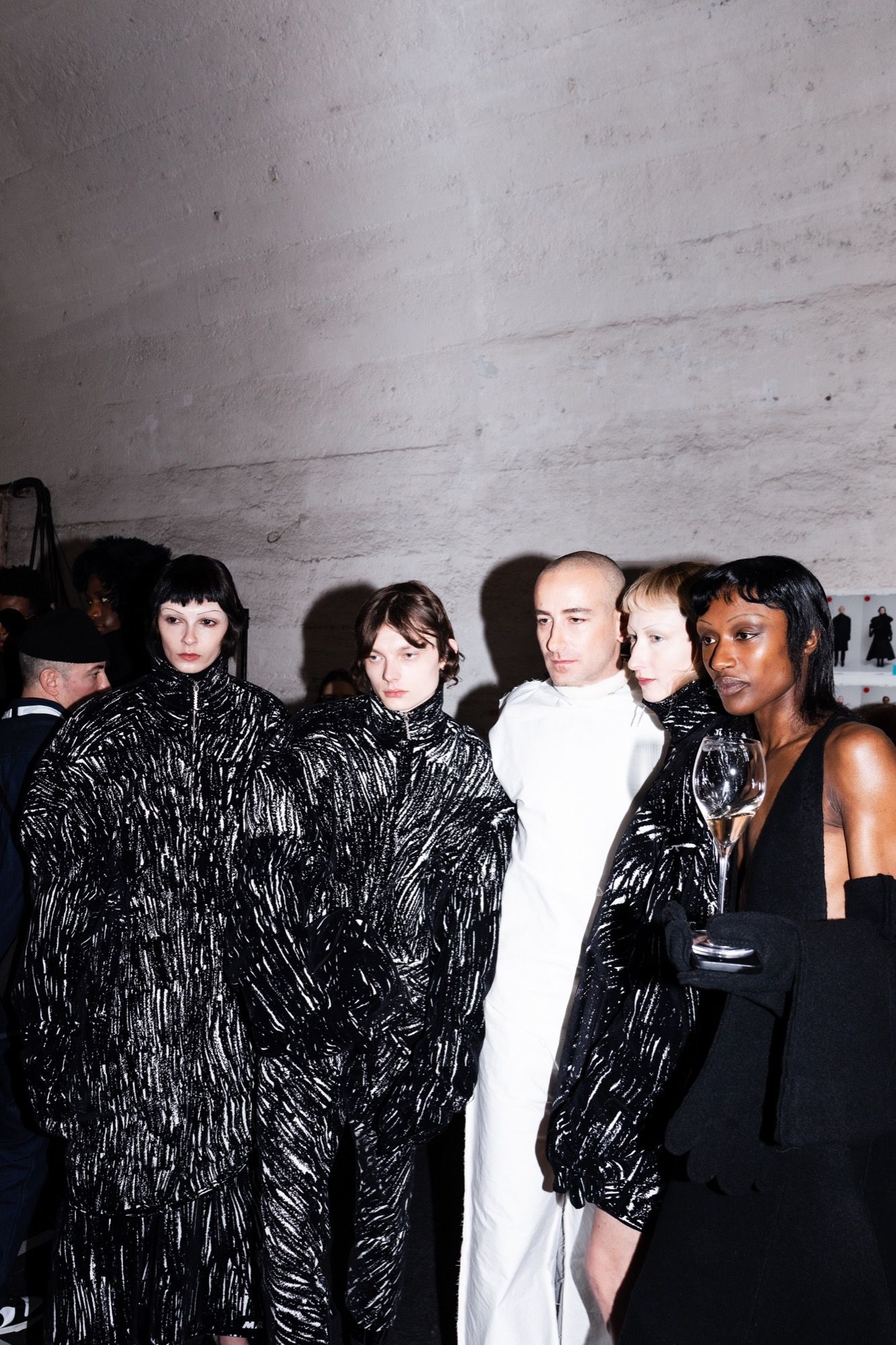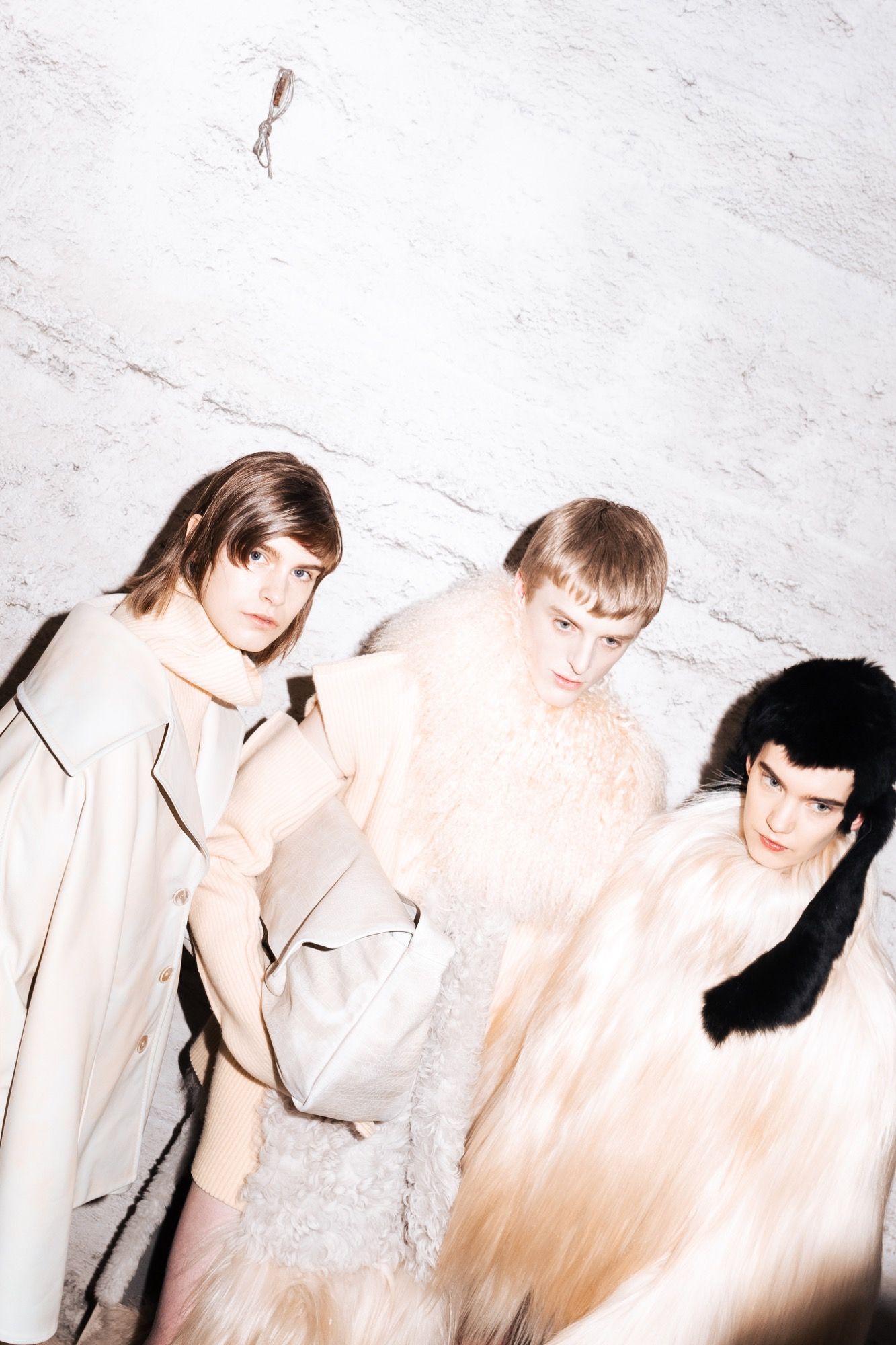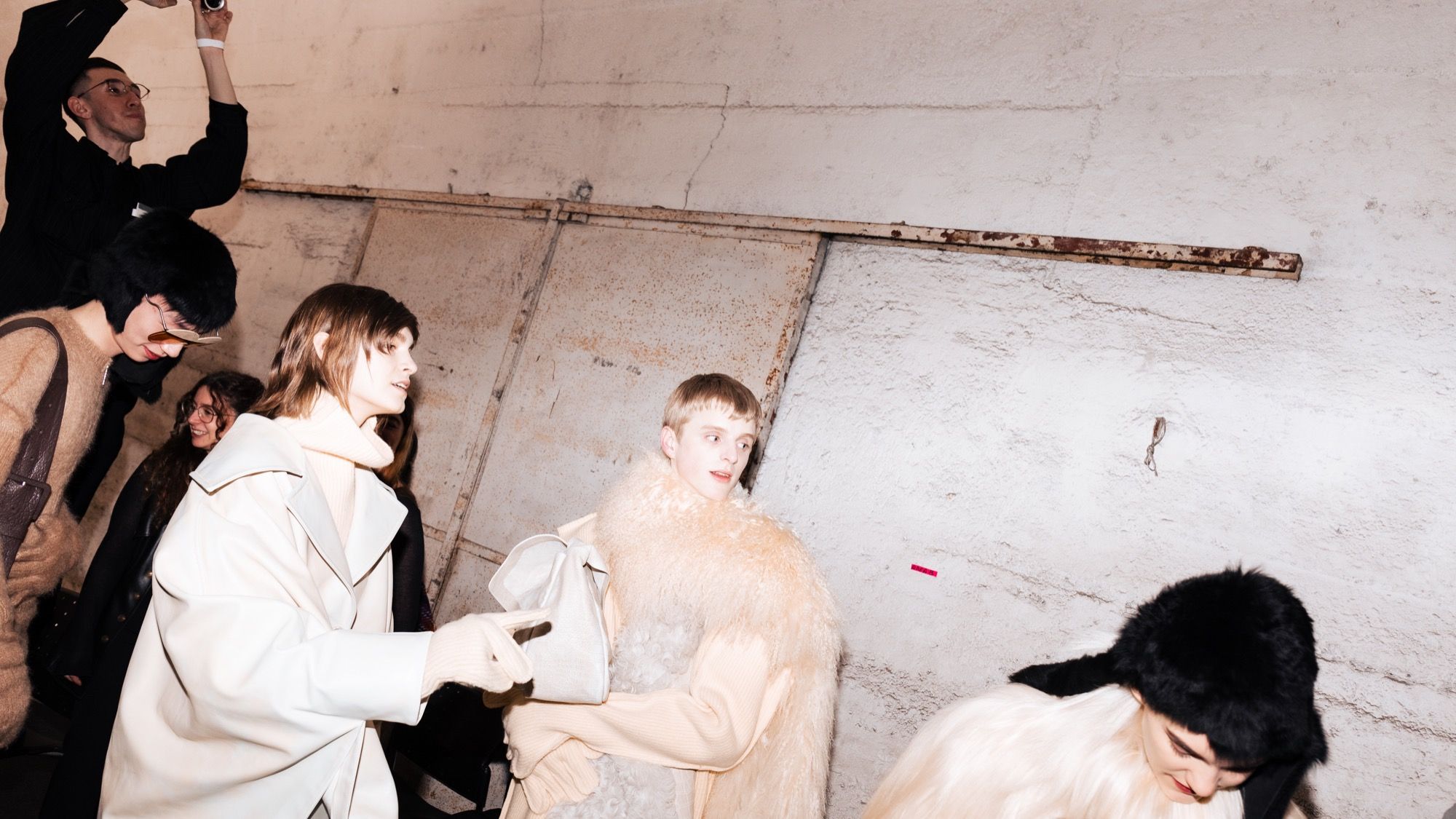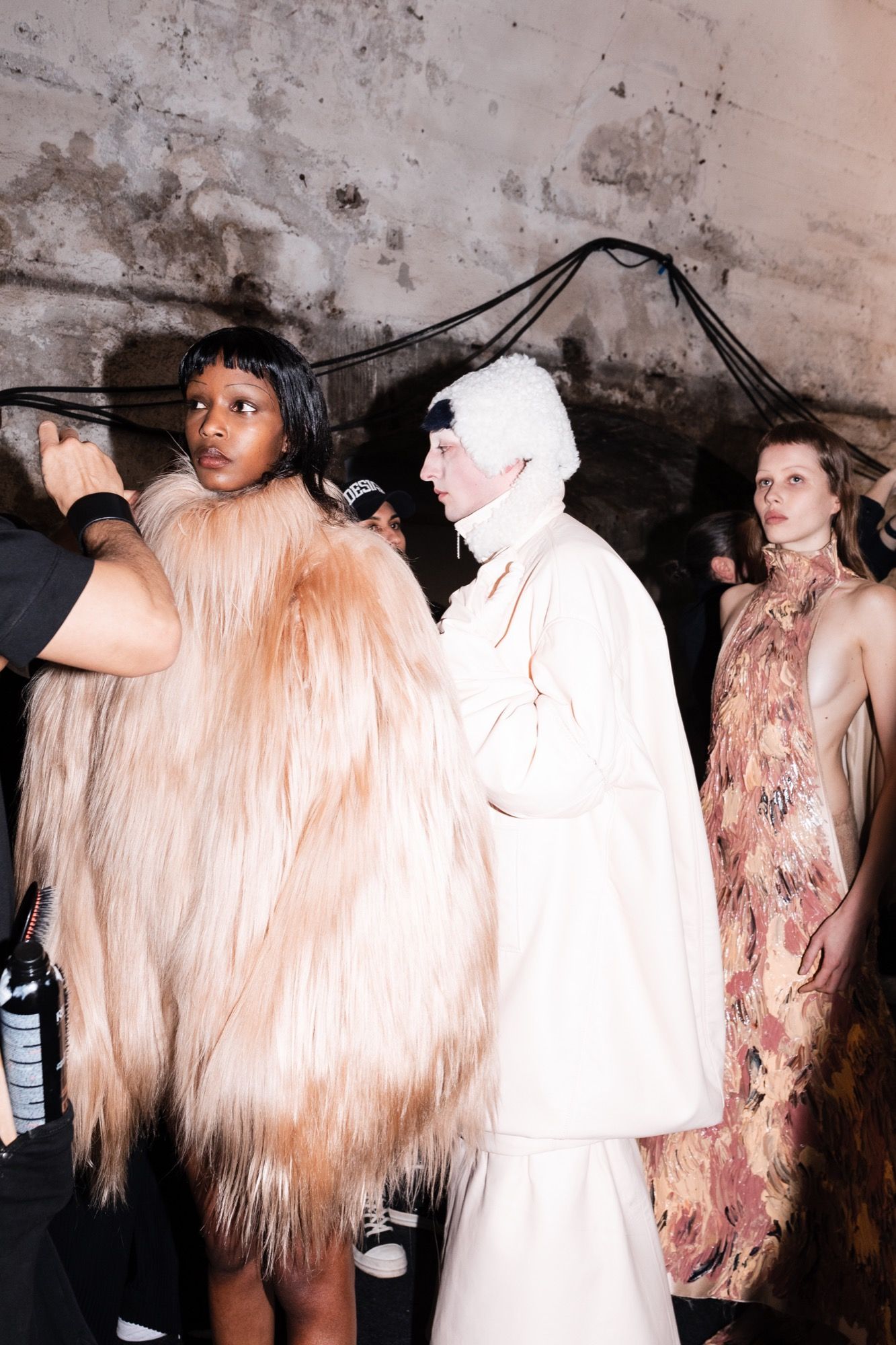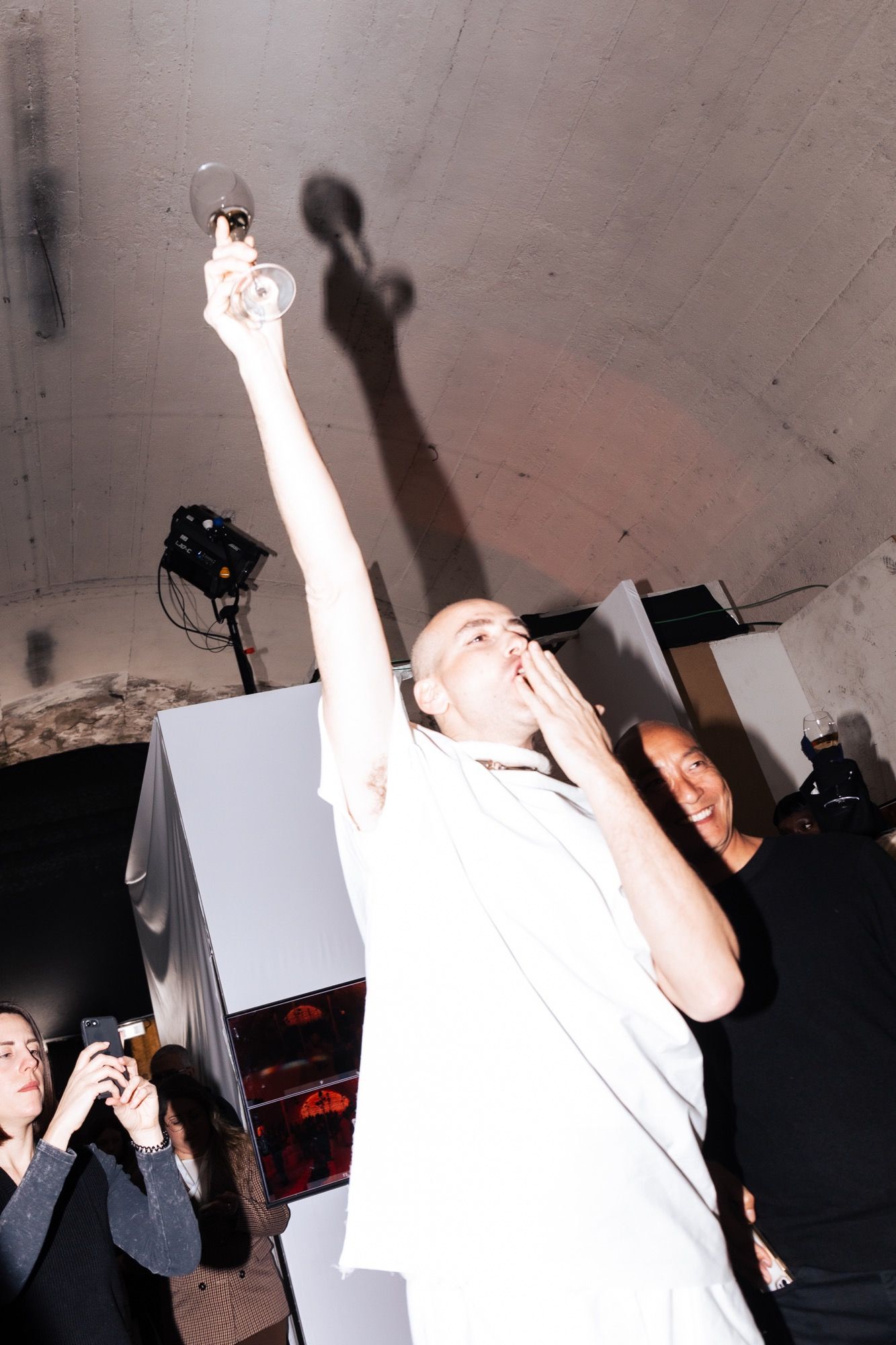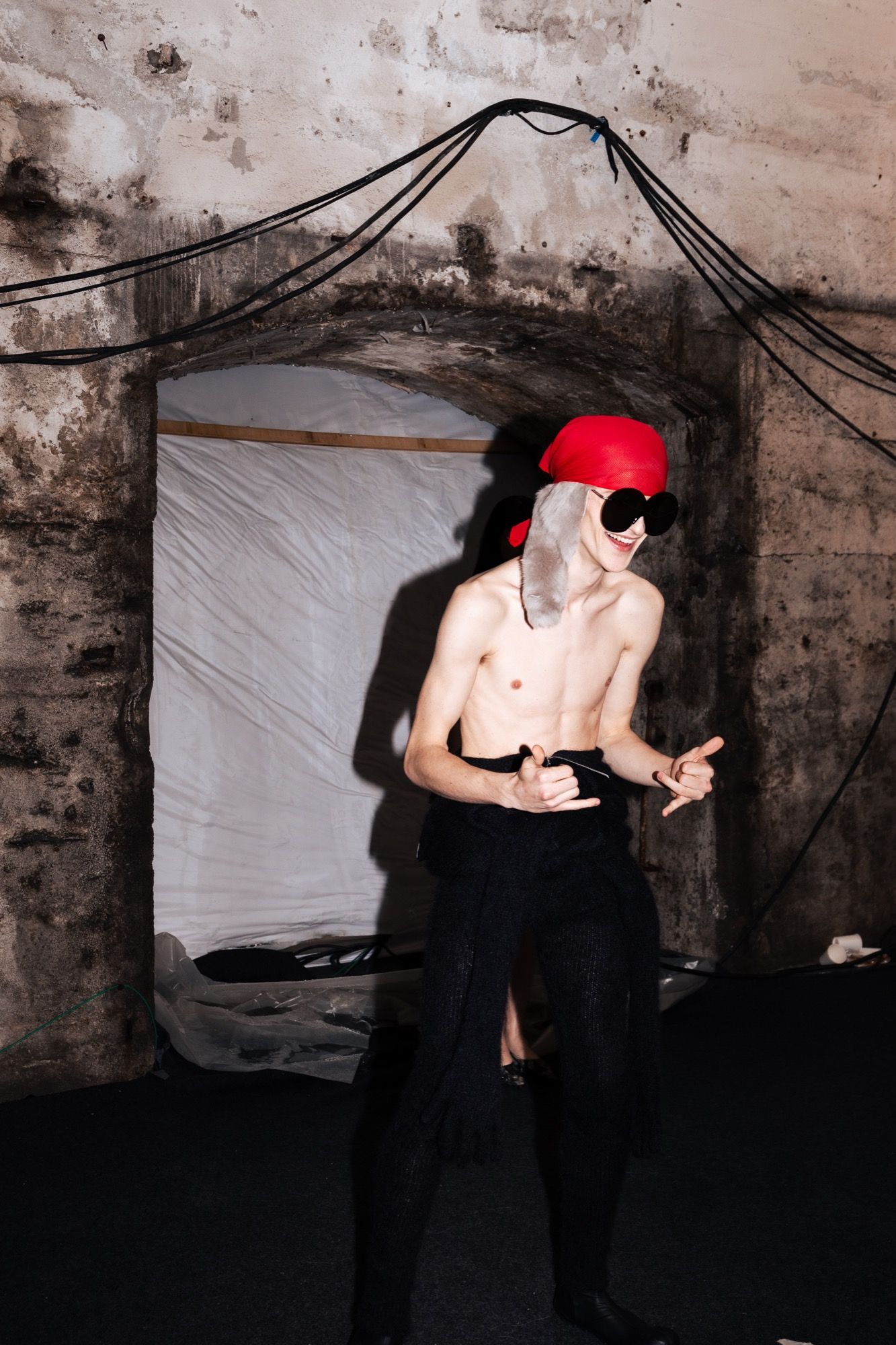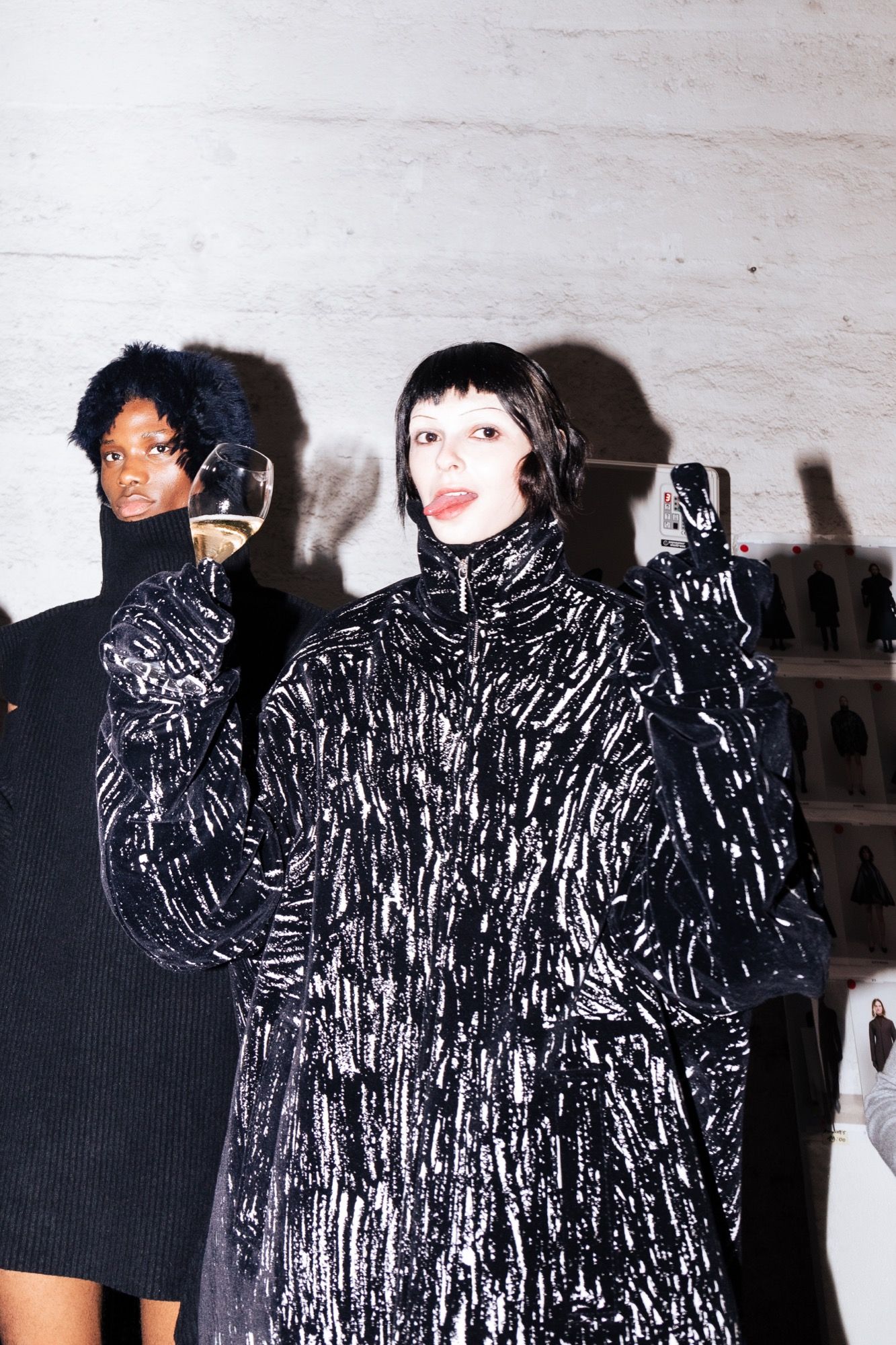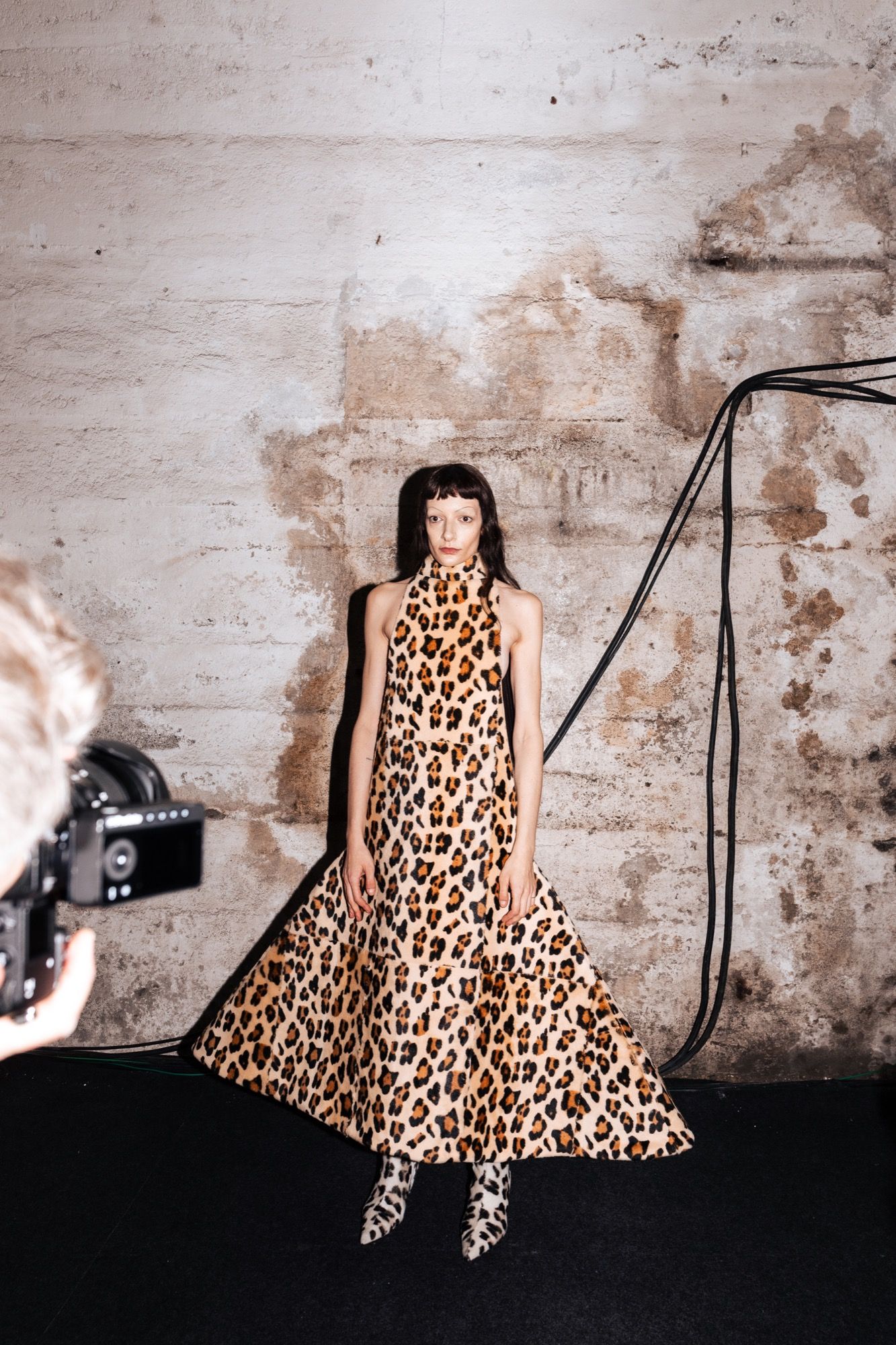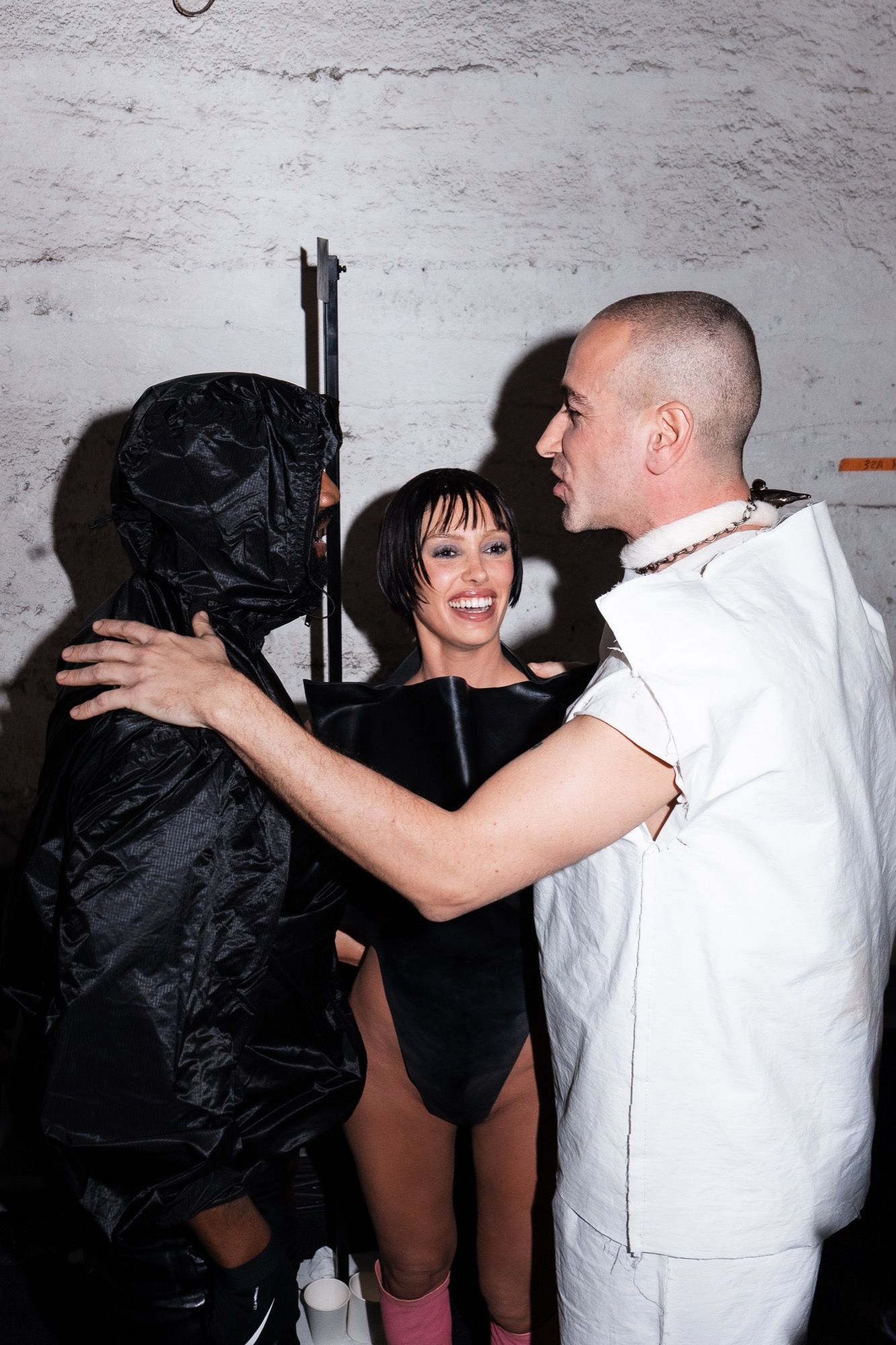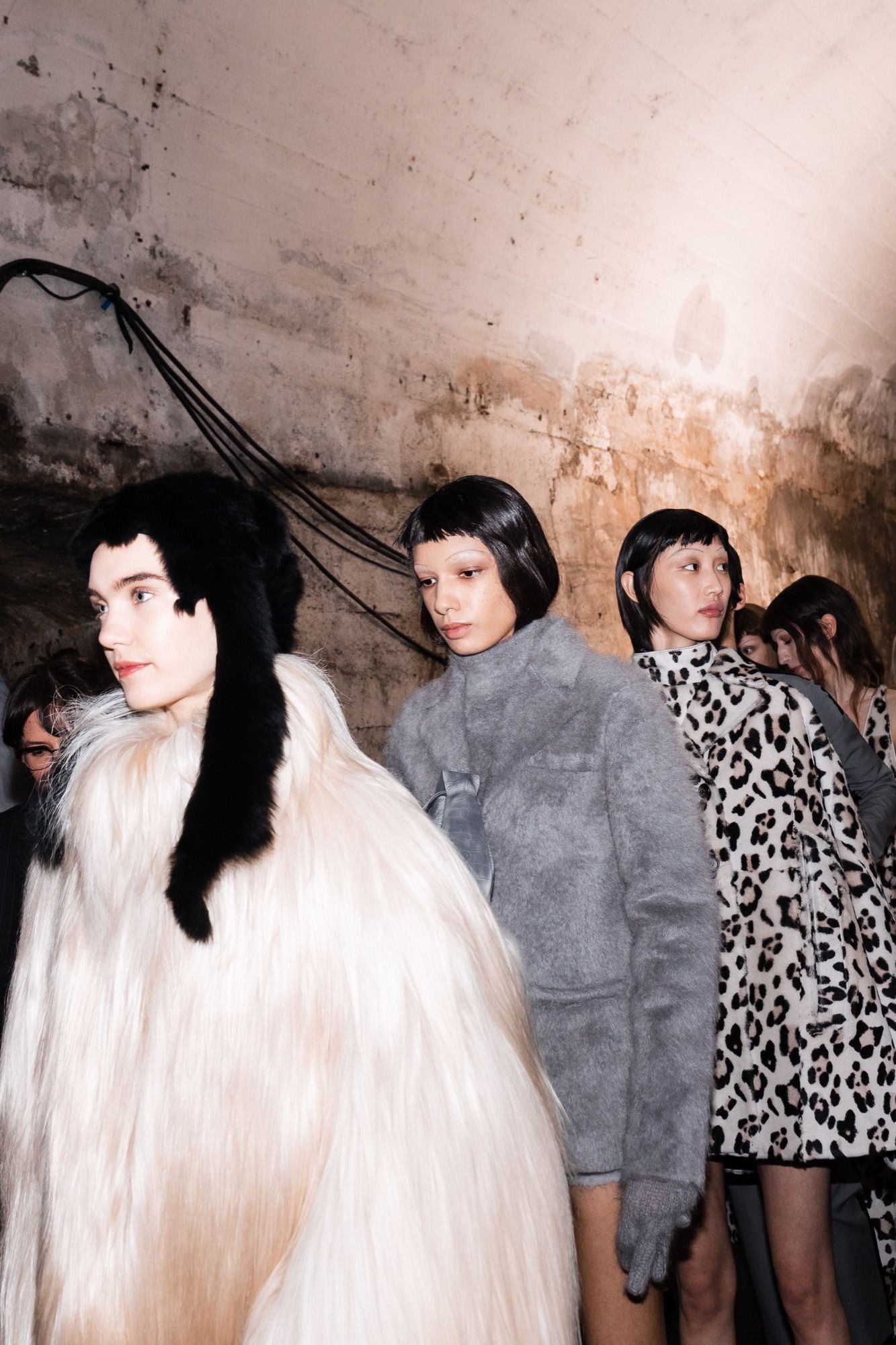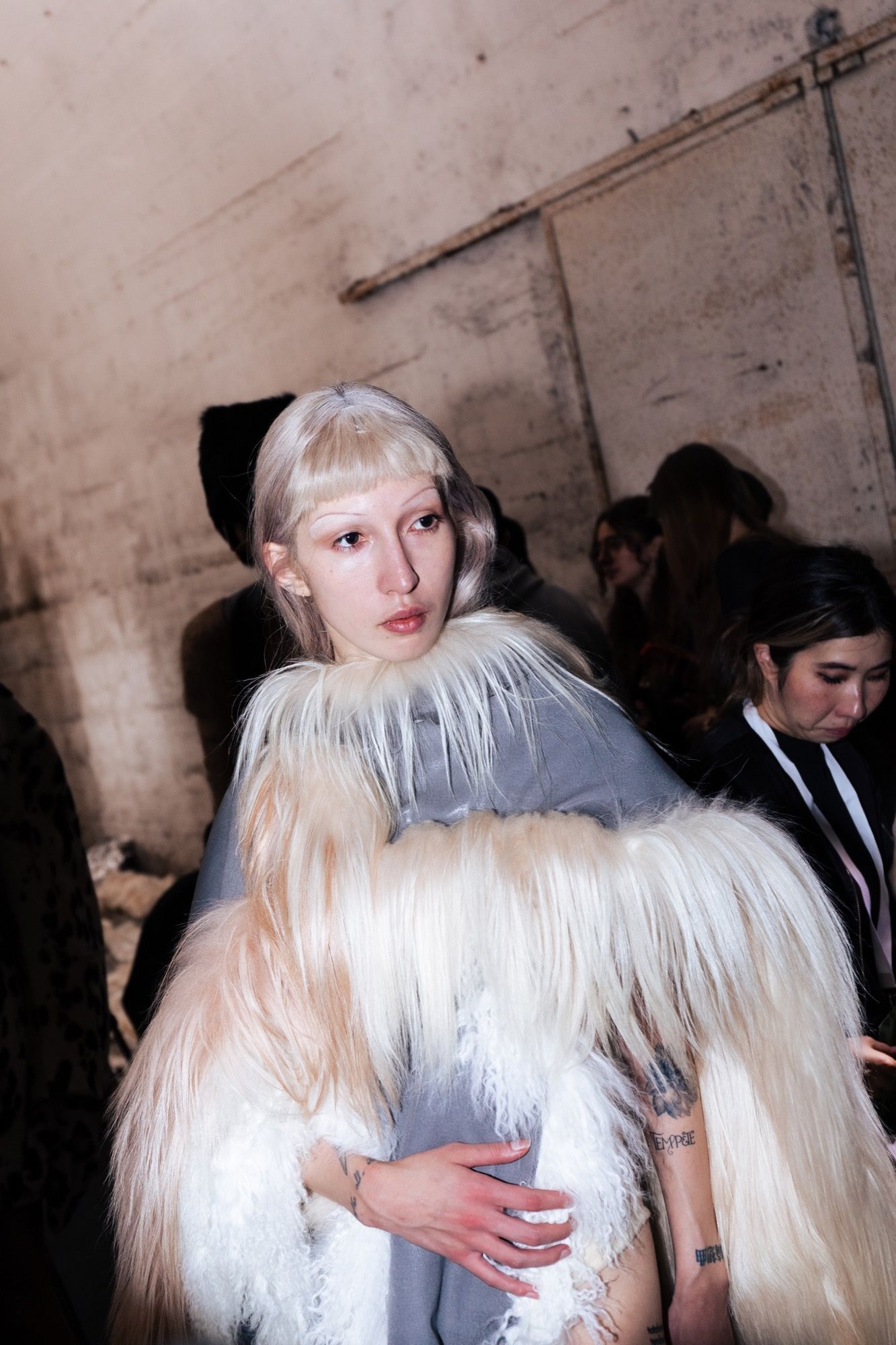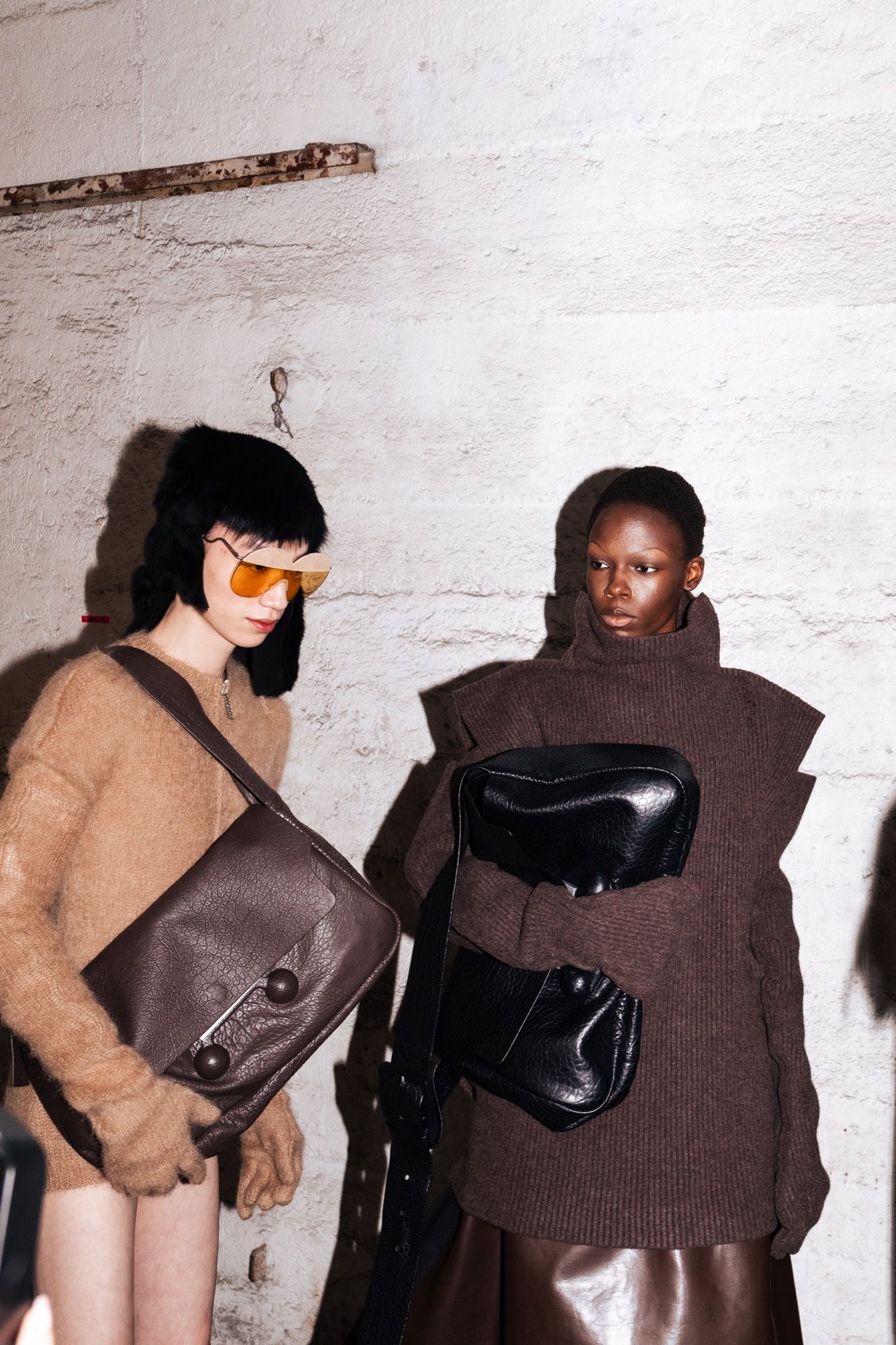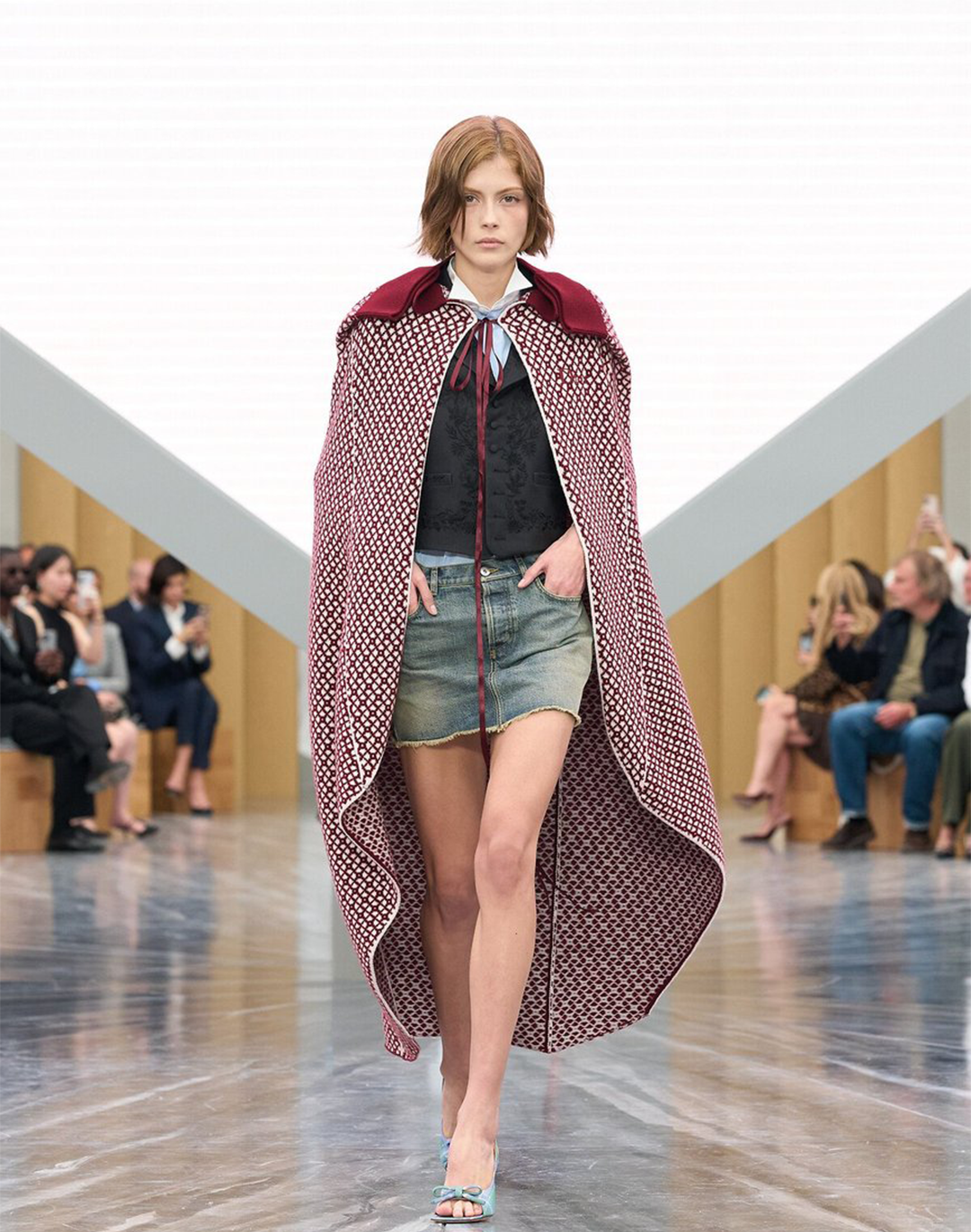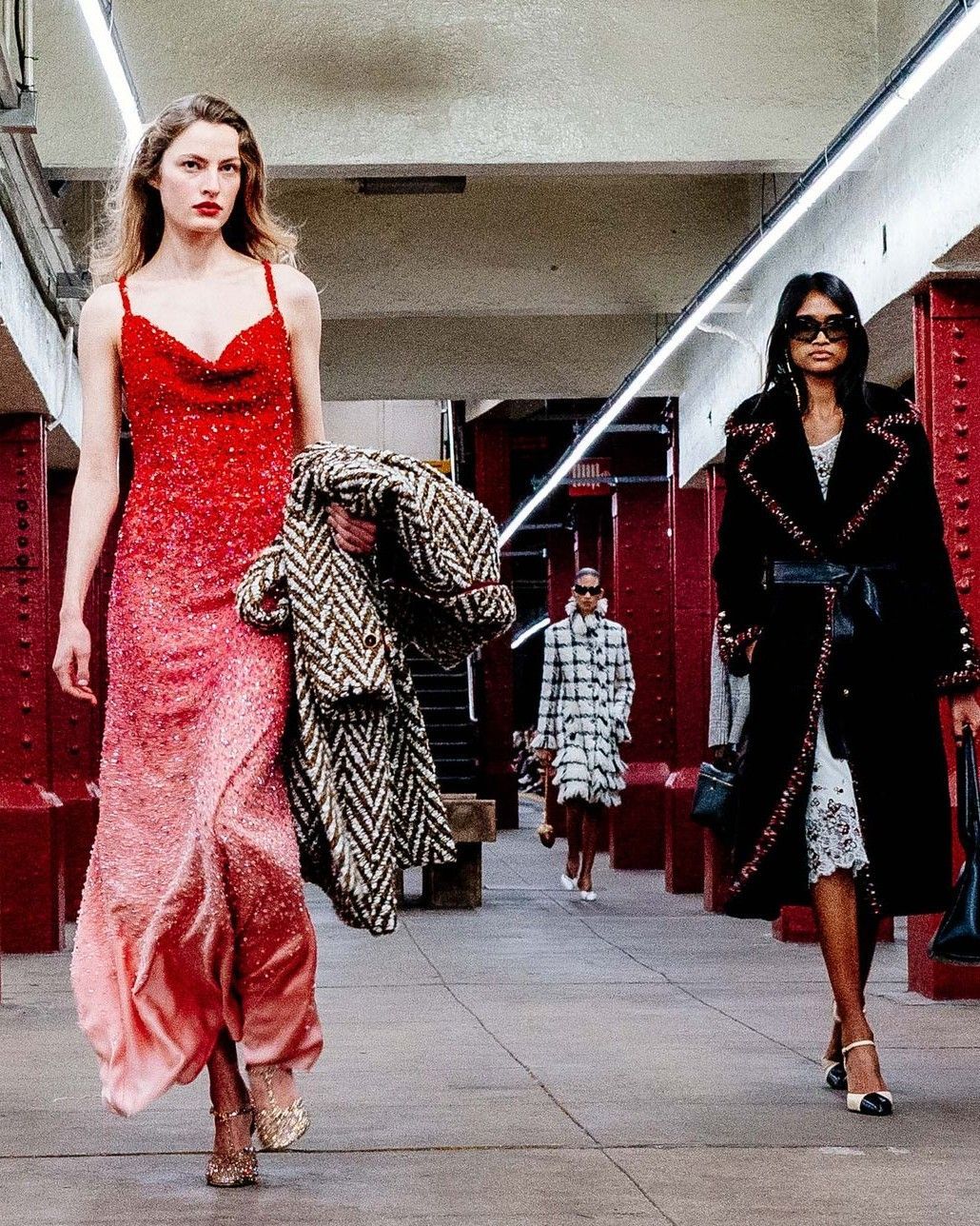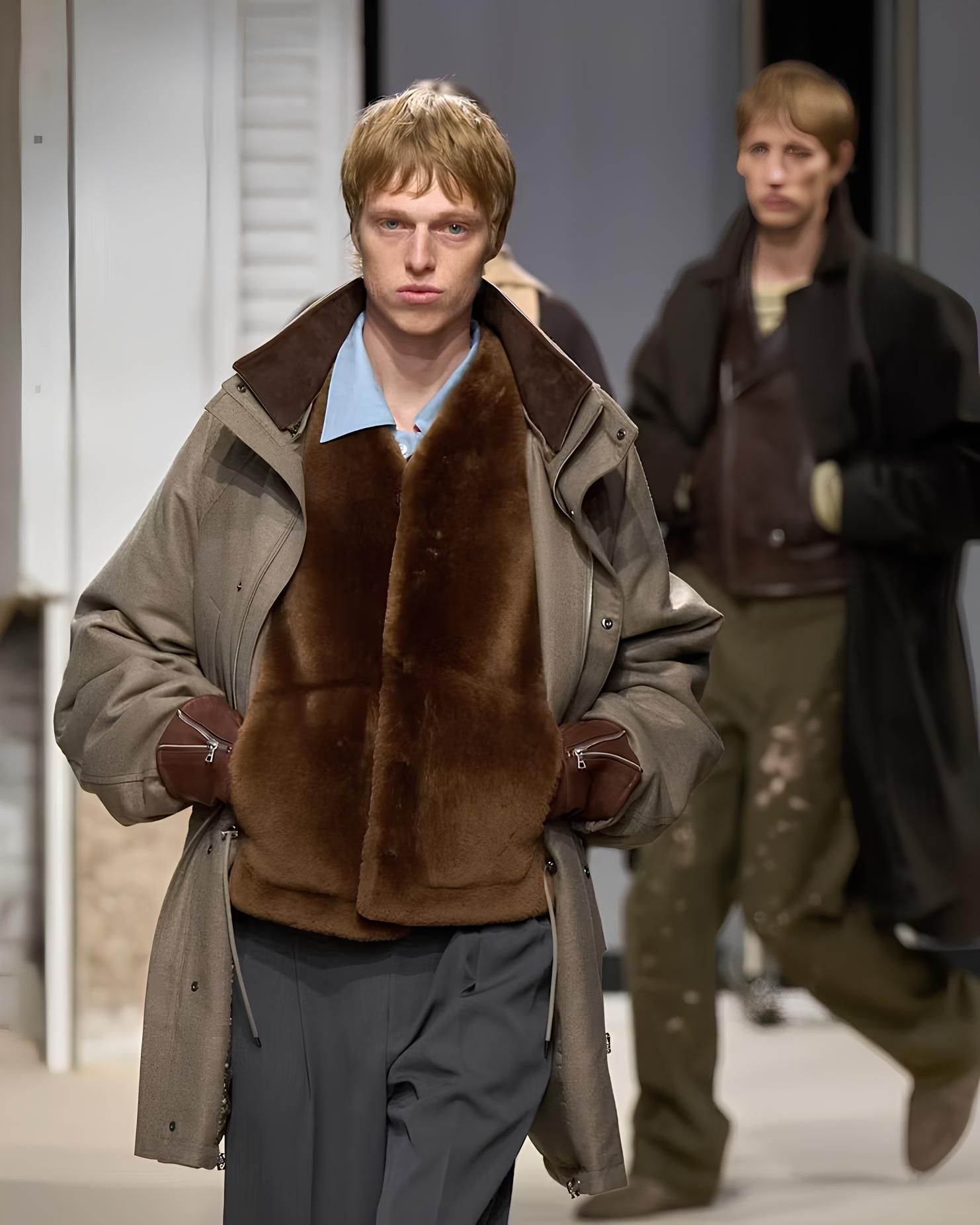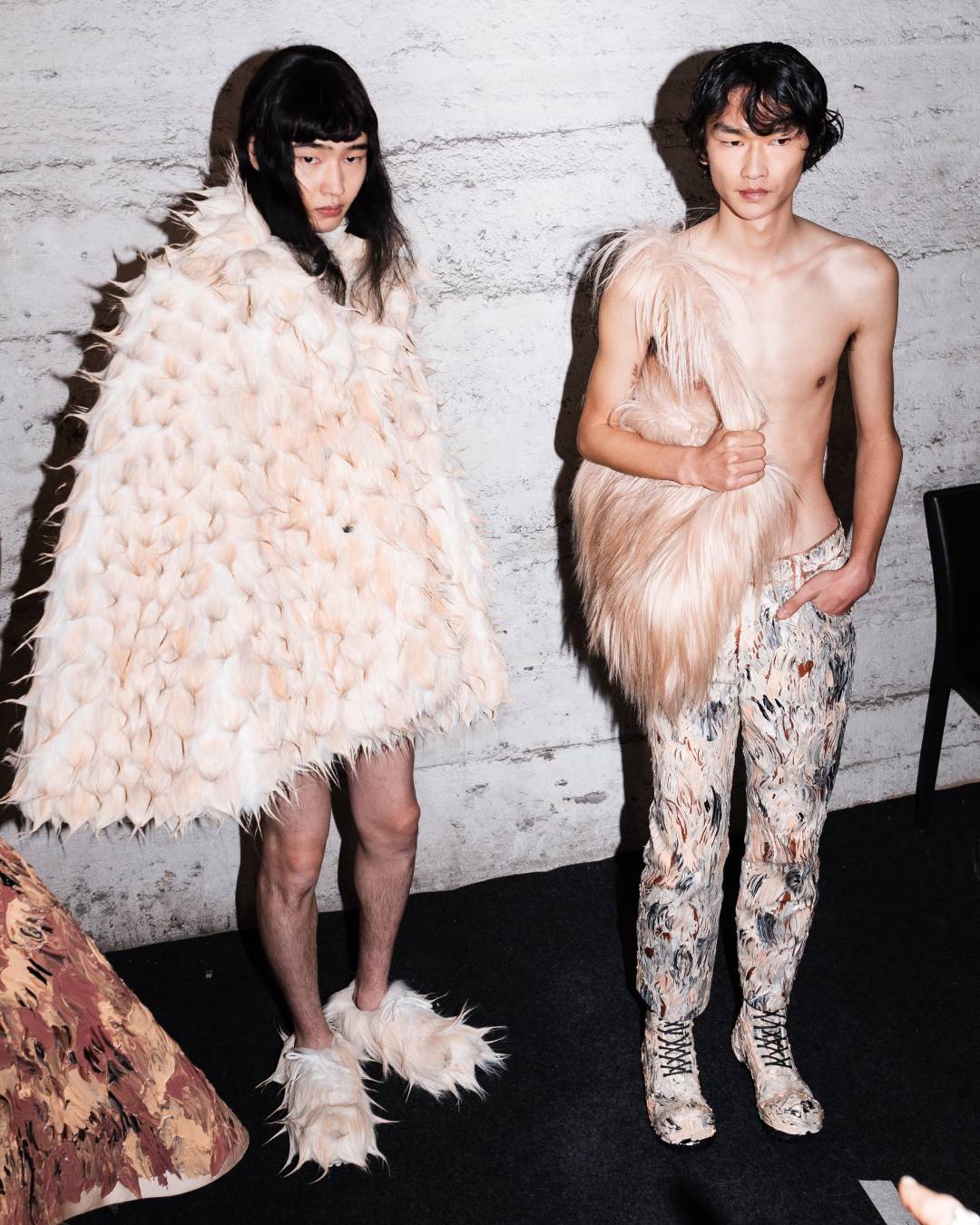
Francesco Risso's dreamy primitivism for Marni's FW24 «If by chance you enter a paper cave, bring no clothes.»
Colorful fur coats in a paper cave, angular silhouettes, hand-painted garments inspired by Vincent van Gogh's "Starry Night": Marni's FW24 collection emerges from a minimalist intent. «If by chance you enter a paper cave, bring no clothes,» wrote Francesco Risso in an intimate invitation, echoing Virginia Woolf's urging to shed inhibitive overlays, «I came to understand that she wasn’t suggesting they arrive naked, but simply encouraging them to strip back the punitive structures of clothing, and all their symbolic implications, because here, it’s just us.» From the desire to return to the essential, to use garments to reveal rather than conceal or mask, the creative process begins with a clean slate. White paper is a recurring pattern for Risso: during last year's FW23 show in Tokyo, the Yoyogi National Gymnasium's inner arena and podium were blanketed with sheets of Japanese paper. Similarly, to prepare their latest collection, the creative director and his team transformed Marni's headquarters, covering every surface in a radical attempt to eliminate visual distractions, forbidding images, mood boards or any other urge in an iconoclastic revolution.
Working without visual references brought to the surface an instinctive, almost primal approach to design; shapes and volumes were stripped of all that was "para-essential" and returned to a state of purity. In contrast to the optic white, almost representing opposing forces blending at the moment of creation, the first garments to step onto the runway were black, playing with surprising and angular silhouettes. Pockets, buttons, pleats, any superfluous component was eliminated, so that the only evocative element was, at least initially, the form. Geometric cloaks, bell-shaped dresses, and oval coats gradually make room for midnight blue and brown, while huge fur scarves envelop the garments like a drape. Animal prints emerge, along with mohair that has always characterized Risso's work, and a kaleidoscope of colors ranging from gray to cream intensifies, culminating in brushstrokes reminiscent of Van Gogh's layered paint. The shaggy textures of furry blousons are gel-coated and then hand-painted to achieve a sharp finish, primal headwear echoes Martin Margiela's FW98, while footwear ranges from fur mules to round-toe ballerinas and tapered pumps.
Just as in Plato's allegory of the cave, where the reflection of the sun allows knowledge of objects, in Risso's personal cave carved out in a tunnel beneath Central Station, the forced elimination of any external stimulus allows the discovery of shapes and materials with the wonder of first times. Rediscovering a joy of creation that harks back to childhood memories, when «everything was fair game. Preceding the imposition of convention, rules, structures and mirrors, creation was boundless; a penultimate experience of levity» when, by "manipulating fabrics", Risso built "an interior zoo" for his silence. Eight years after assuming creative direction at Marni, Risso's whimsy continues to explore the drifts of design in its purest essence, from the dreamy large polka dots presented in Tokyo to the colorful tin dresses that debuted in Paris, then returning to Milan in a primitivism that tastes of avant-garde: «And so, after many years, I am still here assembling and disassembling».










































